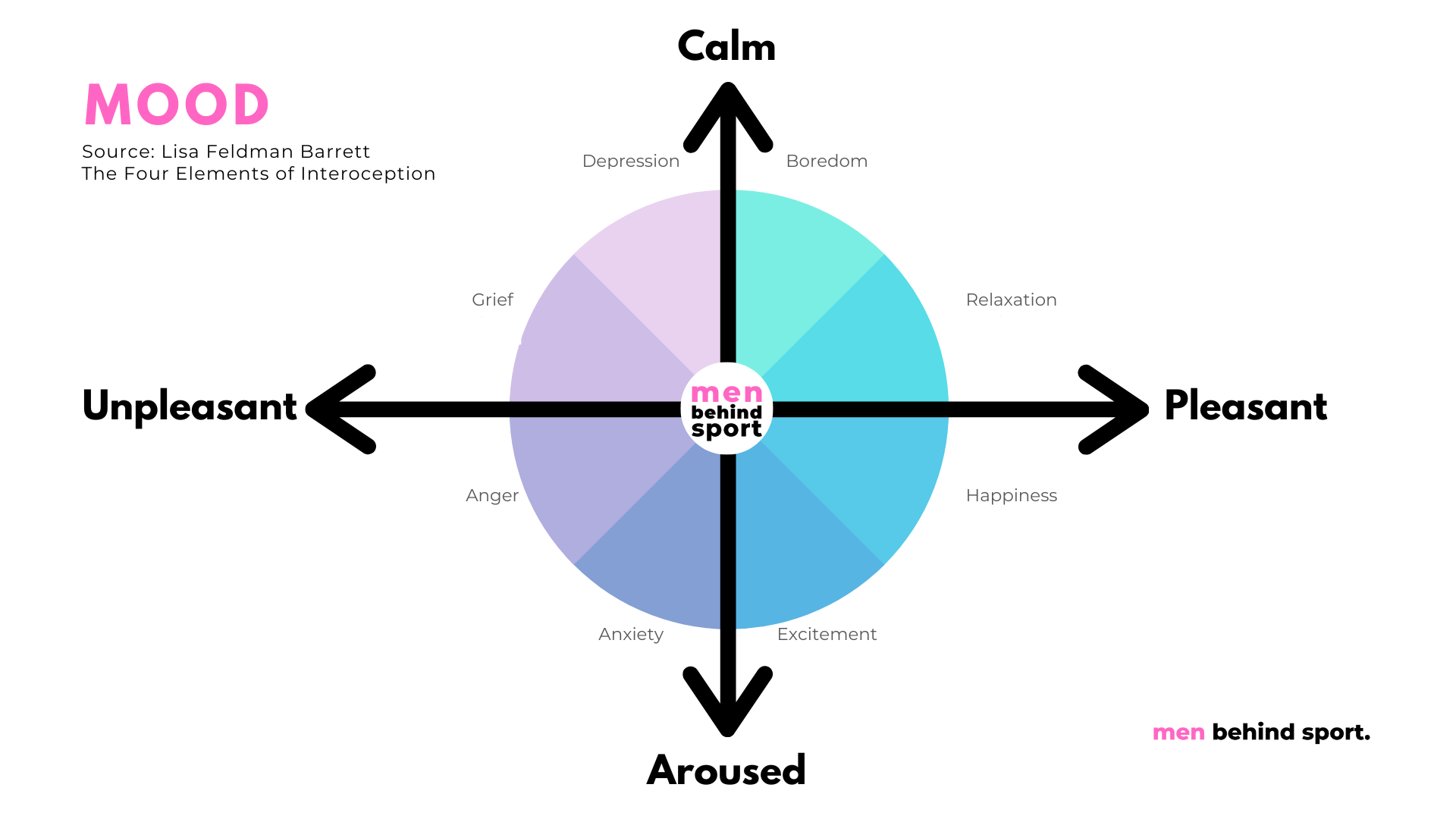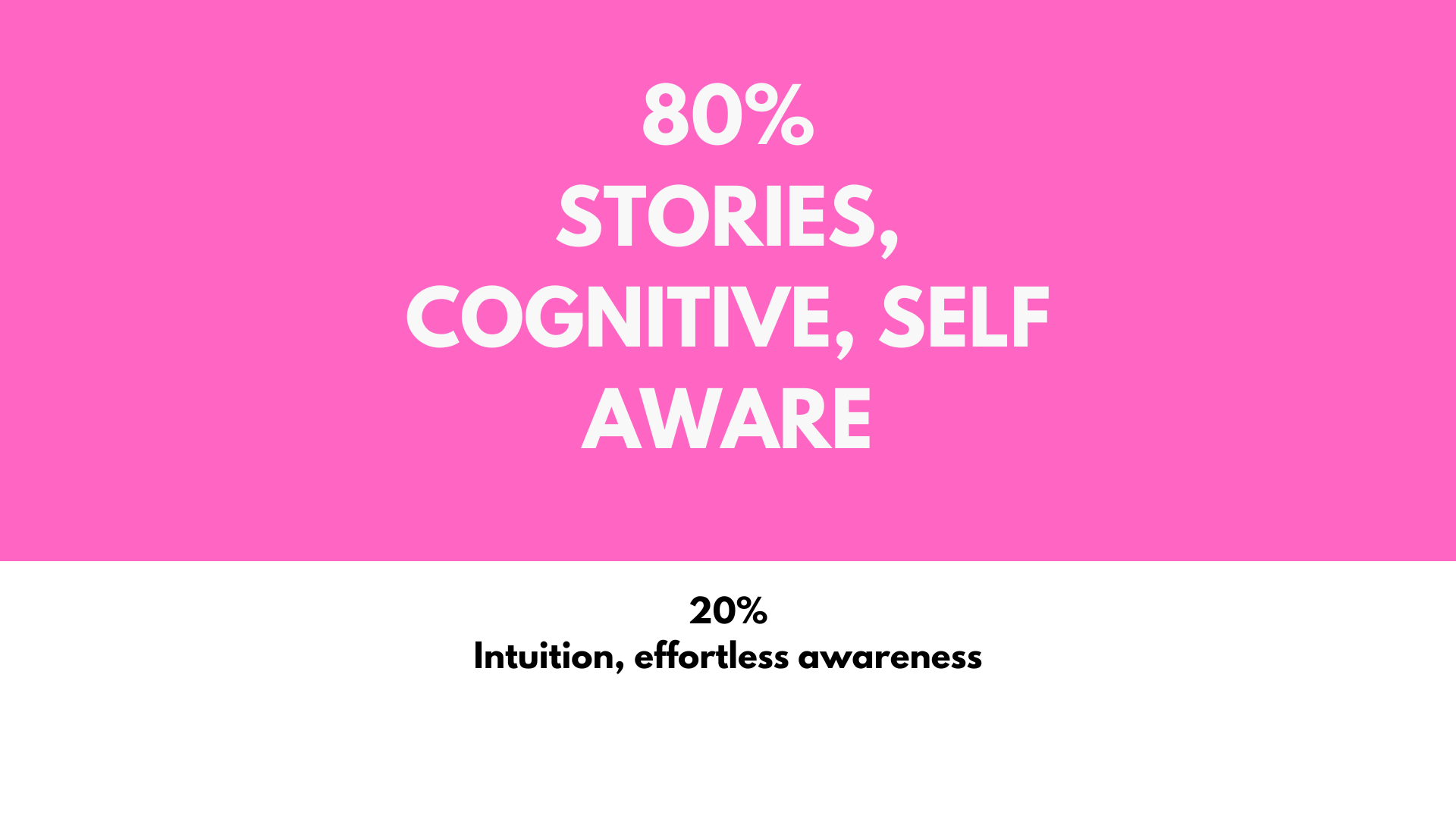
Can’t Stop Thinking About Work? How to Detach And Be Present
Dec 06, 2022One of the major struggles of the coaches I work with is that they can't be present. They're always thinking about what's next, whether that's career progression, qualifications of CPD, the stages of season, or Olympic cycle they're in. This leads them to being stuck in their head when they get home, meaning they aren't showing up for their partner, their children, or themselves.
A performance staff member from the English Premier League told me:
"Working 24 hours a day, seven days a week was down to poor governance by me and the support management. The roles didn't allow me to see my kids. My kids always said, "Dad, why are you always on your phone?" Even when I'm at home with them, I'm not at home with them."
This boils down to a projection into the future, which shows up as underlying anxiety. When we cannot bear those anxious feelings and cannot tolerate difficult emotions, we look to find solutions to our discomfort, aka overthinking and seeking distractions to numb ourselves. This was massive for me in the past.
Part one: The Three Phases of Being

So mapping this out, there are only three places you ever are. You're either in the past, you're either in the future, or you're in the deep now. Not now that you are listening to things, you're reading a book, you're in the deep now present embodied.
So if you're in the past, you're in emotional hijack, painful past or perfect past. If you're in the future, the same, you're in the painful future, fearful future or fantastical future or you're in the deep now. To get yourself in the deep now there are two major strategies, your body and your mind.
In this article we're going to focus on the body.
- What can you do?
- What interventions can you do to get you into your body?
Part Two: Making the 80/20 Switch
I want to introduce you to the 80/20 rule or otherwise known as The Pareto Principle. The simplest way of explaining it is that for 20% of your effort, you get 80% of the results.
And then we often waste a great deal of time, the other 80%, in chasing the final 20% of results. One of the major mistakes I made for much of my career in S&C was not honouring the body. I saw the body as a machine rather than the body-mind, which originates from Renes Descartes's way of thinking.
We have afferent sensory data which comes from our body to our brain. We also have efferent sensory data which goes from brain to the body.
We are living in an “age of disembodiment,” or disconnection from our bodies, in which we often prefer taking drugs, binge-watching social media, or overconsuming to mask the physical symptoms linked to the root of our problems.
What if it’s not your colleague/partner/child who’s making you unhappy, what if it’s just your body?
There’s a pleasant, peaceful word for the act of listening to these little physical cues: interoception, or our awareness of internal bodily signals.
These are signals like hunger, thirst, and heartbeat, which serve as a running commentary or mental map of the body’s internal world, across conscious and unconscious levels of perception.
Lisa Feldman Barrett, author of How Emotions Are Made, encourages anyone feeling dread or anxiety to first ask themselves, “Could this have a purely physical cause?”
An emotion is an event where your whole brain is making meaning of internal sensations in your body in relation to what’s going on around you in the world.
Your brain is a model of the world based on prior experiences. That model is the source of all feelings, thoughts, and actions you take. Our brains are predictor machines… and they make their best guess of what to do and what’s about to happen based on previous experience that creates the models we perceive the world through.
But at the Interoceptive level there are simply 4 elements to our Mood - pleasant, unpleasant, calm, aroused.

You’re either positive or negative - the interoceptive realm. It’s just one of those four areas, when we feel one of them the next thing we do, is assign a word or thought form.
You experience the world through these colored glasses. But understanding this can be a source of wisdom that helps you to make better, wiser choices.
For me, it reinforces the need to prioritise self-care and self-regulation practices which I’ll dive into in part 3.
The truth is that thinking affects feeling, and feeling affects thinking. Without developing awareness of this you’re missing out on a massive amount of information that is guiding your thoughts, feelings and actions.
Our culture, technology, and medicine have progressively made us into poor interoceptors.

So moving from behind our eyes into our body allows us to refine and be more effective with the time we spend within our heads, helping us become more present.

Part Three: 3 Strategies to Help You Regain Your Center and Become More Present
Strategy 1) Chunking uncertainty
The problem with not being present is that our minds are on repeat. We just can’t change from the same level the problem occurs on - because otherwise, we’d all tell ourselves to just stop thinking.
When your brain is working to evaluate the changing environment (looking to decrease uncertainty as fast as possible), it enters a hypervigilant threat monitoring mode to reduce the problem.
Fear can be defined as anxiety + uncertainty = fear Dr Andrew Hubermans definition
Uncertainty is not knowing what is going to happen. Examples include:
- Will you lose your job if the manger is sacked?
- Lack of claity with what's really expected of you in your role?
- It means you’re unsure of what you lead on?
- What is happening about the staff replacements?
- Maybe you’re unsure of how you want to do things under the new performance director.
- What will happen if you begin to put more of your focus into your family and step off a little at work?
Situations like these are leaving many coaches stuck in their head. Uncertainty is managed externally (e.g., analyzing your environment, chunking uncertainty into more manageable bites, etc.)
The next time you catch yourself thinking of the situations that are taking you into the past or future, take a moment to analyze your uncertainty.
- What questions do you need to ask, and of whom?
- What are you pretending not know about your situation?
- Are you trying to be effective, or right?
- What can you control?
- What do you need to let go of?
Strategy 2) Neurophysiology trumps cognition
This is the anxiety component, which is the physiological response and by far the easiest and lowest-hanging fruit to go for.
Anxiety can be managed internally (e.g., breathing tools, visual techniques, conscious emotional control, etc.).
If you want to learn more about the underlying mechanisms of how breathwork effects physiology, you can learn more here.
For me, breathwork has been profound. So much so that I’ve learnt about it deeply, practice it daily and now teach it at workshops. In particular I lead a free breath class for patients undergoing different stages of cancer and treatment.
There aren’t many other groups of people that are dealing with more uncertainty and fear in their life. Yet they apply simple breath tools to manage their anxiety and to become present in their life.
If they can do it, you can do it.
True freedom is a mind that remains curious and can see the beauty in any experience. Your breath is the direct link to a calm, clear mind and body.
The 3 subtle changes I coach to all beginners:
- Breath through your nose.
- Soften your vision (when we are stressed we have a narrow focus - so close your eyes or soften using your peripheral view).
- Double your exhale to your inhale (if you breathe in for 3 seconds, exhale for 6 seconds).
- Do this for 10 rounds.
Simple intervention that you can do in the car once you’ve arrived home before going through the door.
I highly recommend an app called The Breathing App. It’s simple to use and highly effective.
And lastly check out the book Breath: The New Science of a lost art by James Nestor.
Getting into & maintaining heart/brain coherence is one of the most impactful interventions you can do, yet many don’t train it.
It improves not only your ability to be present with yourself and people that matter to you, it also improves decision-making, influencing others, creative thinking to name a few.
Mindset tools are crucial, but neurophysiology trumps cognition.
Train your state of being.
Strategy 3) Develop the skill of awareness
If you're not training the skill of focusing your awareness, you're letting the external environment control you.
People say to me that they can't meditate. That’s the same as saying you need to lose weight before start exercise.
Awareness practices such as meditation aren’t about being quiet. It's about maintaining focus and relaxing the body despite distractions.
The purpose of meditation is to slow down your brain waves and get beyond the thinking, analytical mind. What I want you to understand is that you already know how to do this, because you do it every day.
The simplest place to start is to sit for 5 minutes and watch your thoughts - don’t be them. Are there patterns you can spot? What’s happening within your body?
This step is to train yourself to become aware of who you are being—to shine a light on your unconscious automatic thoughts, behaviors, and feelings. To become so conscious that nothing slips by your awareness unnoticed.
Without criticizing, judging, or placing blame, make a game out of noticing everything about yourself. Instead of identifying with what you observe, imagine that you are just a curious bystander. Now where, when, and how did you lose your awareness in your waking day? What trigger or stimulus caused you to default back to your old, unhappy self and all those self-defeating thoughts and emotions?
Anytime you want to learn – or improve, or master – anything you’re working on, some amount of healthy self-examination and self-evaluation is required. That’s the only way you can improve – and deepen your experience.
When the conscious mind is awake and functioning optimally, it exists in the realm of the beta state. But when the brain is in high beta, that means it’s in a highly aroused, overly active state. This usually indicates you’re living in an emergency mode—otherwise known as fight or flight.
Once you get beyond beta, the first layer of the subconscious is the alpha brain state. In alpha, your breathing naturally slows down, the voice in your head quiets, and the more you continue to relax, the more you begin sliding down the ladder of awareness into the theta and delta states. It takes relaxing, getting comfortable, and discontinuing thought to change your brain and body’s physiology—and you do this every night as you fall asleep.
The antithesis is also true. When you can’t sleep at night, it’s typically because your mind is racing and you’re processing thoughts about your family, job, health, an upsetting event that happened earlier in the day, and of course—a worst-case future scenario that doesn’t actually exist.
If this all resonates, I highly recommend checking out the work by Dr Joe Dispenza.
More control on your emotions means more responsibility. You are the only one who can change you. You’re in charge.



